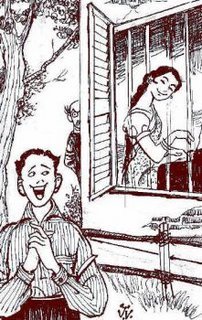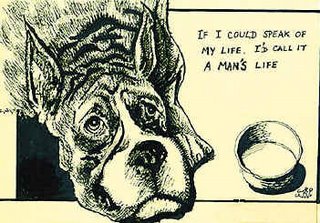FACT & FICTION
This week J. VASANTHAN narrates his experience with some rare characters.

MY WIFE and I used to visit a gift shop in Tallakulam quite often to buy greeting cards. Those days computers and e-greetings were unheard of.
A smart salesgirl
There were three sales girls there. One of them, Jeya, was a pretty and smart. She became quite friendly with us and we took a liking to her. One day, just as we entered the shop, it started raining heavily. We had to wait inside for about half an hour. Since there were no other customers, Jeya chatted with us. And we came to know her tale of woe. Contrary to what we had thought, she came from a very poor family. Her father died when Jeya and her sister were small. The mother supported her two daughters by making and selling pickles and appalams. It was a hand to mouth existence. The mother felt that she could educate only one of the two daughters, and inevitably, the younger one was favoured. Jeya had to drop out from school after 8th standard, though she had been doing very well in her studies. She went to work in a shop. When it came to buying clothes or jewels, the second daughter was the lucky one. "I can buy new clothes for only one of you. Since she is going to school, she needs nice clothes". This was a refrain that Jeya got accustomed to. And she too liked to help her sister. Jeya had tears in hereyes as she told us all this.
Fact and fiction
Later I decided to write a story based on what Jeya had told us. But in the story Jeya does very well in her sales career. She attends Spoken English classes and sales management courses. Eventually she becomes a sales magnate and marries a director of a big firm. In the last paragraph they are both flying to Paris for their honeymoon. Well, that is fiction for you. When the story was published in a magazine, I gave a copy of it to Jeya, who was all excited about it. When the remuneration for the story arrived, I put it in an envelope and gave it to Jeya. She was overjoyed since there were just three days more for Deepavali, and this money meant that she wouldn't have to make the usual seasonal sacrifices. Many of my friends who read the story and had heard the story behind the story, visited the shop to see Jeya, and having gone there, bought something or the other as a friendly gesture. The proprietor of the shop who had been observing all this, raised Jeya's salary. An elated Jeya told us about this during our next visit.
The ragpicker
When we were living in Natchathira Nagar, near P & T Nagar, we used to see young boys and girls picking rags and other waste material from the open area in front of our house. One of them, Karpagam, was a 12 year old girl. Her face was encrusted with dust and clothes were torn and filthy. Yet, there was a brightness in her face. Her eyes sparkled with intelligence. She was a friendly soul, and quickly befriended us. She carried an enormous sack filled with junk that she later sold and made a modest sum every day. She was accompanied by a little dog which followed her about like Mary's little lamb.
No school for her
Impressed by Karpagam's intelligence, I offered, along with the help of some of my friends, to send her to school. We were willing to pay her school fees, buy her books and clothes. "My father will kill me," she said. Apparently her father was a drunkard who expected his little daughter to bring in enough money every day to nurse his habit. If she brought in a little less, he would thrash her with his belt. "No school for me," she said sadly. So we decided to help her in some other way. Several of our neighbours agreed to give their old newspapers to Karpagam free. She collected huge bundles of old papers and took them to the paper shop. When we heard that the paper shop was not paying her the correct price, we went there and spoke to the owner, and after that Karpagam got the full amount. One day I saw Karpagam sitting near a fence and blowing through a reed, creating some kind of music, which gave me an idea for a story.
The ragpickers
In the story, a renowned music director happens to visit the locality, and hearing Karpagam and some of her friends playing a tune on reeds and tin cans, he `discovers' them, and launches them as a music group. They are known as `The Raga Pickers', and become very successful. The story was published in a children's magazine, and when the cheque arrived, I encashed it and kept the money ready to give to Karpagam. But she didn't turn up for months. One day I saw another girl picking waste material. I called her and asked her why Karpagam was not coming nowadays. "Karpagam died one month ago," she said. A crushing sadness descended on us, and lasted for a long time. Even today when we see small children collecting junk for a living, we think of Karpagam, and the wasted life of a wonderful girl.
© Copyright 2000 - 2006 The Hindu






